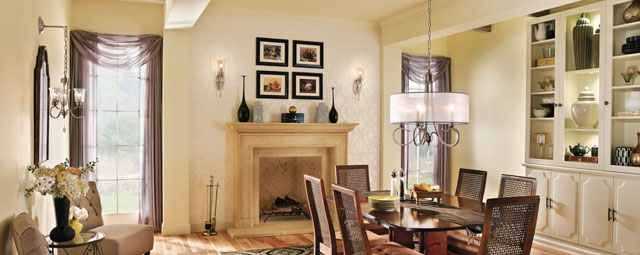How Many Watts For Dining Room

With so many different shapes, sizes, and styles of light fixtures available, it's easy to forget that they actually serve a real purpose; other than to look pretty of course. Recently, we have had a few customers ask us if the chandelier or pendant they are shopping for will be enough light for their room. And we tell them the simple method of how to find out.
It can seem like a daunting task to figure out how much light is needed in any room, but I assure you it is super easy and simple. All you need is basic math and the measurement of the length and width of the room in feet.
Calculate Wattage Needed for Any Room:
Sounds like it might be complicated, but it really is just simple math. To start, all you need to do is multiply the length of the room in feet by the width of the room in feet. This will give you the square footage. For example, a 16 foot long by 14 foot wide room has a square footage of 224.
Once you have the square footage of the room, you can use it to find out how much wattage you will need for general lighting in the room. The reason the wattage calculation is important, is because most incandescent lighting fixtures have a maximum wattage listed. For example, a 6 light chandelier that uses incandescent bulbs might have a maximum wattage of 60 watts per light, for a total of 360 watts for the fixture. How would you know if 360 watts is enough for your two-story foyer light? Or is 360 watts overkill for the intimate breakfast nook?
To calculate the total wattage needed, multiply your square footage by 1.5. Going back to our example of the 16' by 14' room, which has a square footage of 224, we would multiply 224 by 1.5 and get 336 watts. The general lighting in the room will need to reach the 336 watts mark to ensure there is plenty of overall light.
Other questions we get often at Lighting by Lux, is how to apply the wattage requirements across multiple sources of lighting for the room and if it should be done, or is one light fixture enough? Our usual answer is to this question is simple. One light fixture is never enough. Also, splitting the wattage requirement across multiple light sources will create the desired effect of a well lit room.
Different Sources of Light:
What is general lighting and why is it important, you may ask? Well general lighting, or ambient lighting as it's sometimes referred to, provides a comfortable level of brightness, allowing anyone to see and walk around in the room safely. It is also described as the indoor version of basic sunlight and is the main essential for any lighting plan. Best fixtures which provide general lighting for a room are chandeliers, pendants, flush and semi-flush mounts, and wall sconces. Using a combo of these light types will give you the best overall lighting in the room and create visual interest too.
Another important type of lighting to have is task lighting, and yes it's exactly what it sounds like. Task lighting is used for performing tasks which require more direct light for the specific area you are working in. Cooking, applying make-up, doing homework, working on hobbies, playing games, or reading books will require a direct source of light than just the general lighting provided in the room. Table and desk lamps, swing arm wall sconces, undercabinet lighting, bath vanity, kitchen island and billiard lights, are examples of task oriented lighting fixtures.
To find out task lighting wattage recommendations using the same method as earlier, just figure out the square footage of the surface area you need more direct lighting in, say like a desk or counter. Then multiply that square footage by 2.5 to get the suggested wattage fixture for the area. For example, if a desk table top is 3' by 6', the square footage is 18. Multiply 18 by 2.5 and you get 45 watts. The 45 watts of task lighting needed for our work area will not add or subtract from the suggested 336 watts for the general lighting.
The third source of lighting used in design is accent lighting. This is used to add visual interest to your room by creating a focal point. The focal point can be the art on the walls, the walls themselves, household plants, or even the items on a bookshelf. Accent lighting needs to have about 3 times more light than the general lighting required for your room, so the pieces or furniture that are being highlighted, stand out among the rest of the items in the room. Track and Spot lights, Picture lamps, and wall torchieres are used to achieve this additional drama to your room.
These 3 sources of lighting - General, Task, and Accent - if used in your room correctly are the key to achieving the best lighting possible. Also referred to as layering light, designers will use all 3 elements to create the atmosphere and look that best represents you and your sense of style. And now, you know how to go about doing just that by yourself. So get to it!
Still have questions or need advice on lighting your home? Contact us at 1-800-419-5967.
How Many Watts For Dining Room
Source: https://www.lightingbylux.com/blog/how-to-determine-the-proper-wattage-for-any-room/

Tidak ada komentar: